Complimentary worldwide shipping on orders over $400 · No import tariffs for most countries
Complimentary worldwide shipping on orders over $400 · No import tariffs for most countries
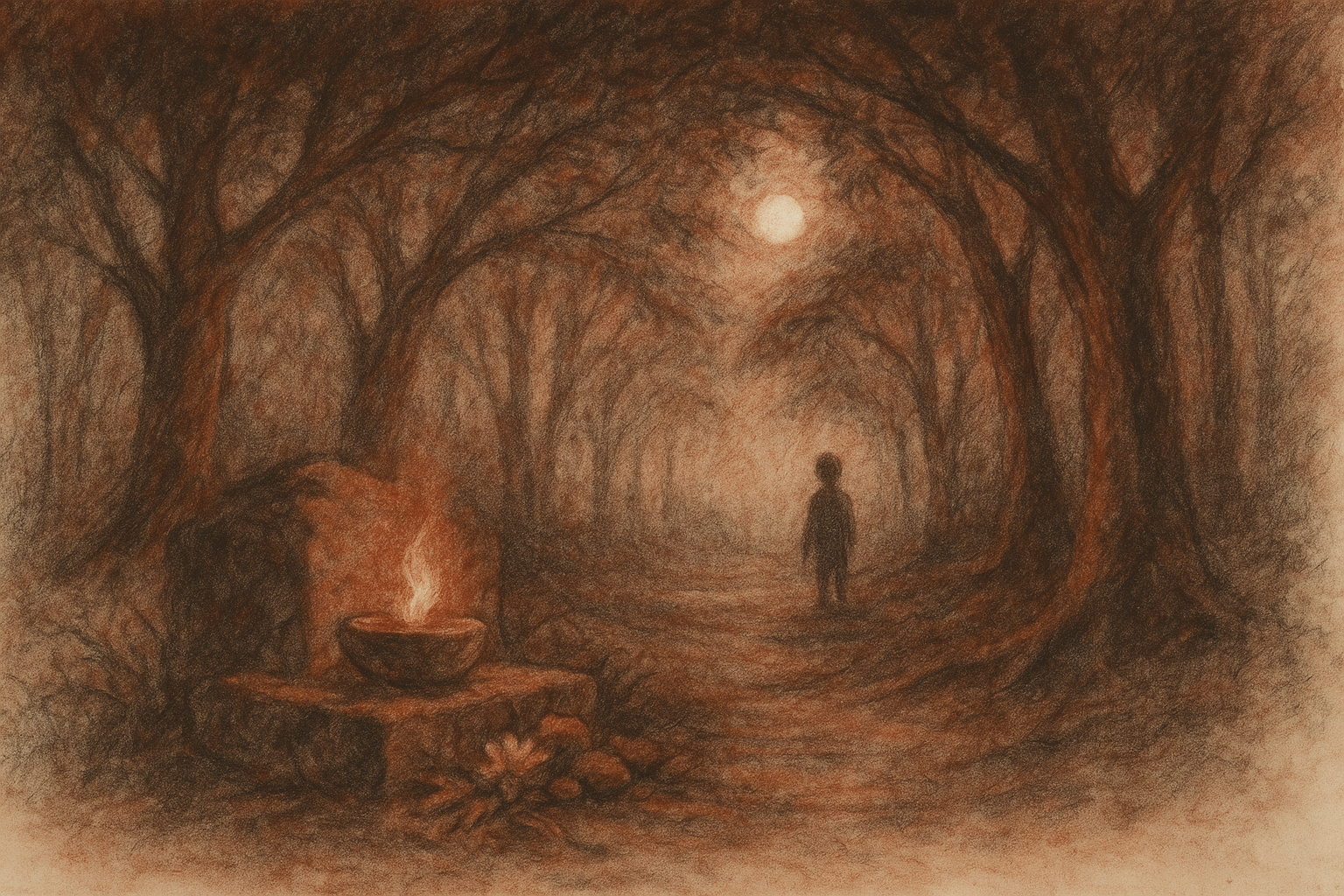
The Whispering Forest: Arak and the Celestial Light
In the roots of the tamarind, the spirit turned its face.
There is a forest east of the old river, where no bells are hung and no rice is offered to the wind. The elders call it Prey Proloeu—the Whispering Forest. Not because the trees speak (though they do), nor because the wind stirs with meaning (though it does), but because something waits there—old as rain, with breath like smoke and eyes like drifting light.
In that forest walk the Arak—earthbound spirits who keep the secrets of stone, blood, and root. Some protect. Some possess. Some remember what the living have long forgotten. And sometimes, when the veil grows thin, the Boramey descend through the branches—celestial spirits, vast and luminous, who once dwelled among the stars and now visit only where reverence is kept.
The villagers of Thlok Andet lived at the forest’s edge, beneath tall sugar palms and red earth. They did not fear the Arak, but they did not name them after dark. They left offerings at the forest’s lip—crushed jasmine, coins wrapped in banana leaf, white rice smoked in clay—and lit candles when the wind came from the east. The old medium, Srey Mealea, told the children, “It is not fear, but reverence. The forest remembers how to dream. So dream with care.”
It was during the Festival of Calling—the time when ancestors walk close and firelight stirs the forgotten paths—that the boy Vireak vanished.
He had gone with his sister Dara to light incense at the foot of the banyan stump. She turned for but a moment, shielding the flame from the wind. When she looked again, the boy was gone. No broken branch. No cry. Only footprints that stopped at the roots of the tamarind, where the earth was dry and quiet.
The village gathered. Some said the Arak had taken him for a spirit’s errand. Others whispered deeper things—sins unnamed, promises unkept, an offering missed. But Srey Mealea knelt at the tamarind and pressed her fingers to the soil.
“He is not taken,” she whispered. “He is caught—between breath and dream. Between the light that rises and the root that holds.” Then she closed her eyes and sang something low and round, like a drum beneath fog.
That night, she entered trance.
—
They laid her on a mat before the shrine. Dara knelt beside her, clutching her brother’s scarf. The wind circled the stilted houses. A single owl called once, and then fell silent.
When Mealea spoke, her voice was not her own.
“One walks with the forest in his blood,” it said. “One climbs the ladder of the wind.”
“Where is he?” Dara asked, her heart half stone, half thunder.
“Where spirits wrestle for what still breathes,” came the answer. “The Arak guard the roots. The Boramey hold the sky. But the boy walks between—unclaimed, unblessed, unreturned.”
“What must be done?”
A silence settled like mist.
“Go to the stone with no name. Bring water touched by moonlight. Burn the hair of the living, and the fruit of the dead. Then listen. The forest will speak.”
The medium’s body fell still. Somewhere deep, a tamarind pod cracked open.

Dara and Mealea went alone. The villagers did not stop them. The old ways are not meant for many feet.
By moonlight they found the stone—an altar with no inscription, veiled in moss and circled by trees that bent inward like prayer. Dara poured the moonlit water across its face. Mealea lit a candle and burned a strand of Dara’s hair. Then they placed the ripened fruit of the chheuteal tree—split and black with sweetness—into a bark bowl and waited.
The wind fell silent.
Then the trees whispered in a tongue that bore no words.
From the dark rose a light—not fire, not star, but something that pulsed like memory. It hovered above the offering, flickering.
Dara stepped forward.
“Let him be returned,” she said. “If there is fault, let it be mine. If there is memory, let it be shared.”
The wind stirred. The candle flickered blue.
Then a figure stepped from the trees.

It was Vireak—but changed. His eyes did not blink. His steps were slow, as though relearning the earth. He reached the altar and touched the bowl with trembling fingers.
Srey Mealea did not raise her gaze.
“It is not finished,” she said. “He is returned—but not whole. One spirit gave him dream. One gave him shadow. They dwell within him still.”
Dara knelt in the grass. “What must I do?”
The old woman finally looked up.
“You must teach him both songs. Let him remember the sky and the root. Let him carry both. That is the harmony the forest seeks. That is how balance returns.”
—
Years passed.
Vireak grew. He spoke little, but when he walked the forest, no snake struck, and no branch broke. He carved tamarind wood into shapes no one had taught him. He murmured to banyans, and wept when the stars fell.
Dara kept vigil. She taught him the chants of the ancestors and the silence of the spirits. At the full moon, they offered fruit to the roots and lifted their hands to the constellations.
In time, others came—to listen, to learn. To remember how to walk between realms. How to offer, not to command. How to commune.
And in the village shrine, Srey Mealea’s altar bore a new carving: a tree whose roots held a human face, and whose branches reached the stars.

They say that even now, if you walk to the edge of the Whispering Forest—when the sky is still and the wind carries the scent of jasmine—you may see a flicker near the tamarind grove. Not firefly. Not flame.
And if you listen, truly listen, you will hear two voices.
One rises like wind. One echoes like root.
And between them, a child’s laugh, returning.
—
Some spirits rise to the stars,
others guard what lies below.
The sacred walks between.
Let the silence remain. Let the breath deepen.
The tale is finished—but not gone.
Also in Library
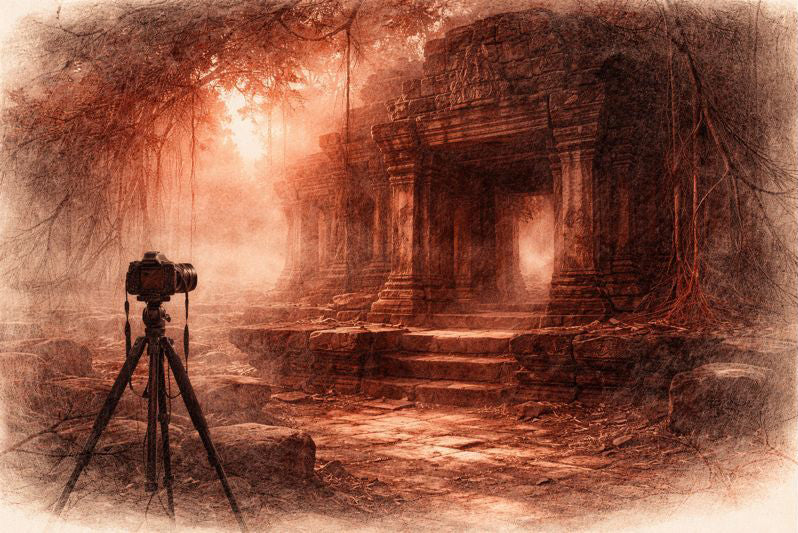
Before the Shutter Falls
3 min read
Before the shutter falls, fear sharpens and doubt measures the cost of waiting. In the quiet hours before dawn, the act of not-yet-beginning becomes a discipline of attention. This essay reflects on patience, restraint, and the quiet mercy that arrives when outcome loosens its hold.
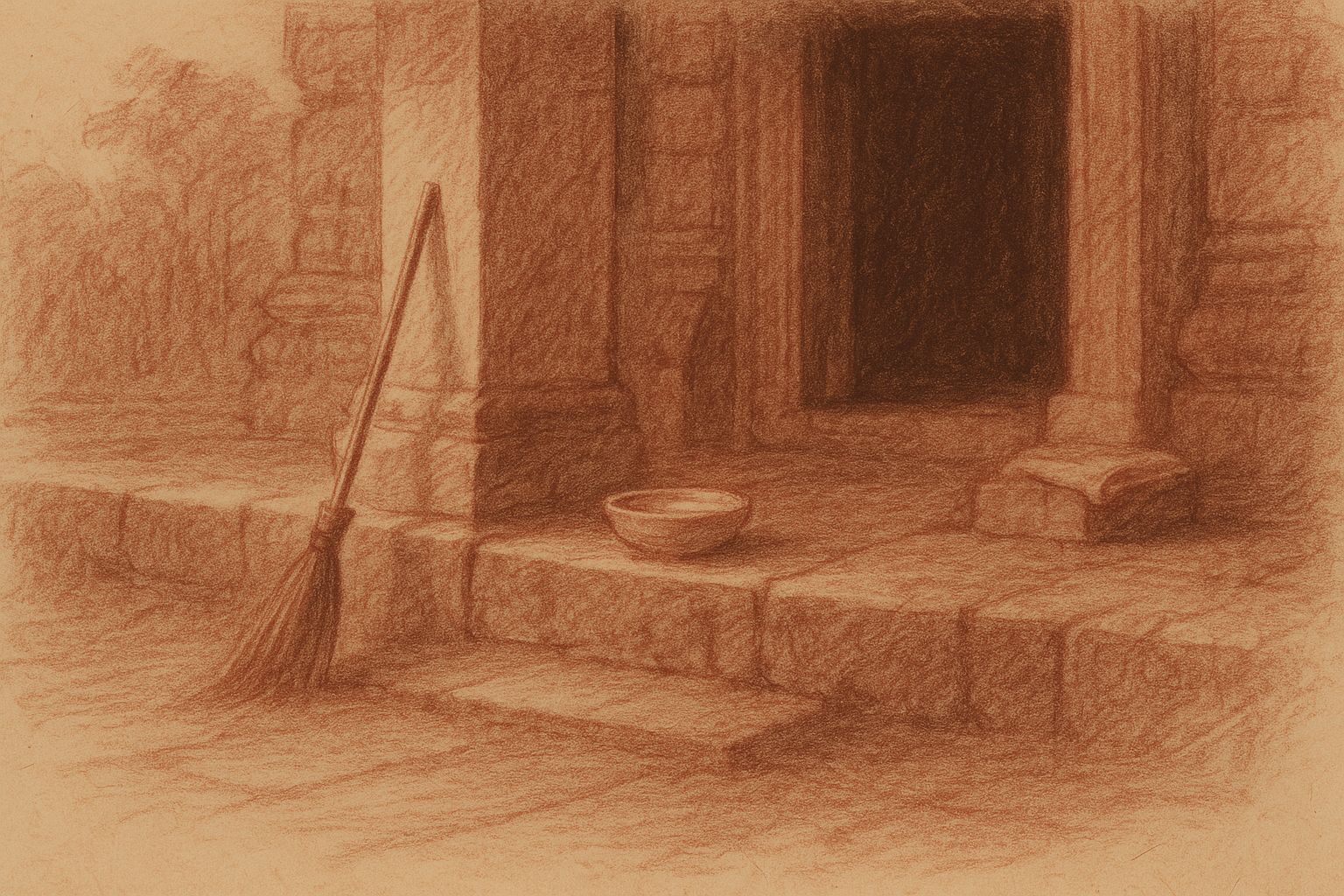
Those Who Keep the Way Open — On the Quiet Guardians of Angkor’s Thresholds
3 min read
Quiet gestures shape the way into Angkor — a swept stone, a refilled bowl, a hand steadying a guardian lion. This essay reflects on the unseen custodians whose daily care keeps the thresholds open, revealing how sacredness endures not through stone alone, but through those who tend its meaning.
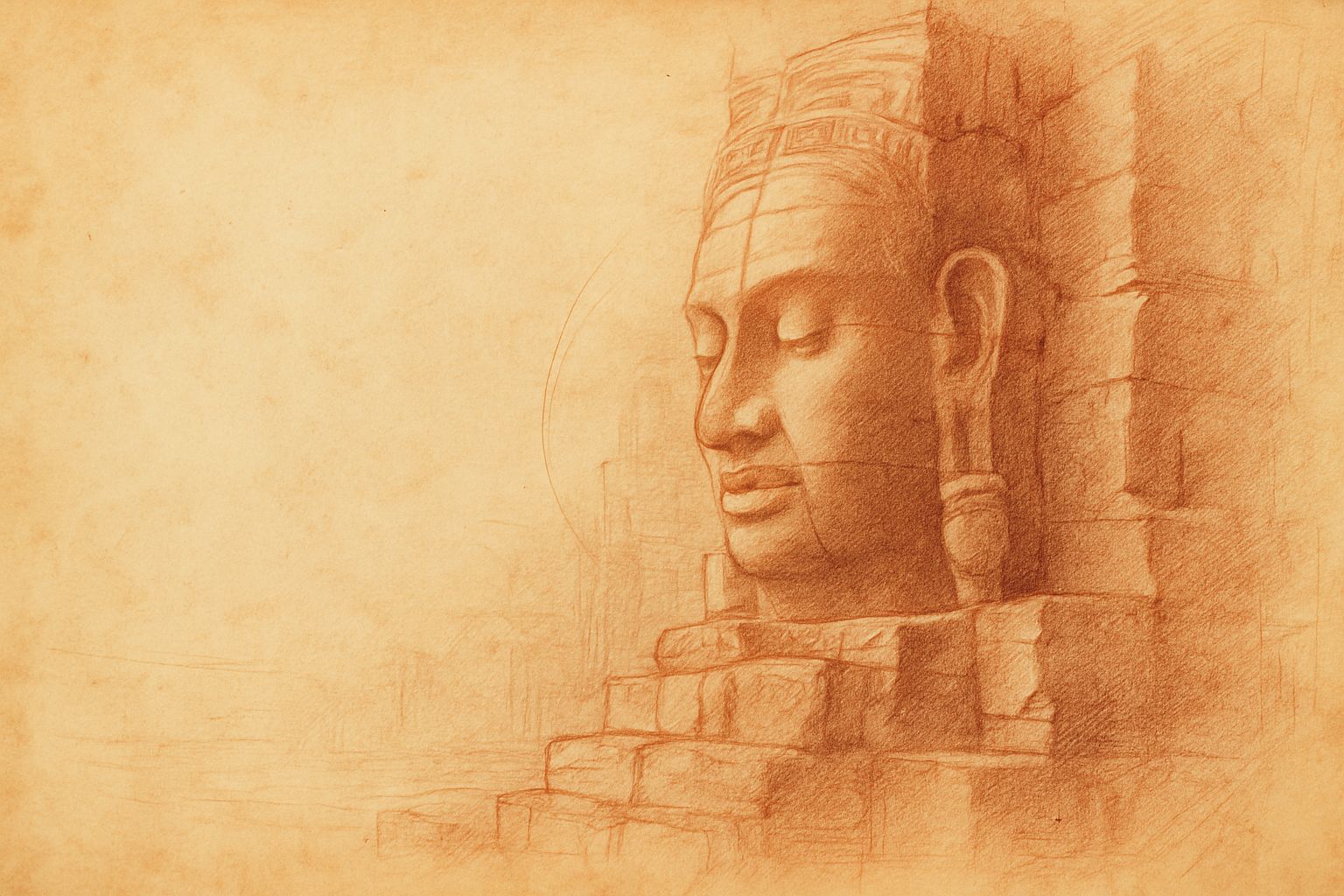
Multiplicity and Mercy — The Face Towers of Jayavarman VII
5 min read
A new vision of kingship rises at the Bayon: serene faces turned to every horizon, shaping a world where authority is expressed as care. Moving through the terraces, one enters a field of steady, compassionate presence — a landscape where stone, light, and time teach through quiet attention.
Join My Studio Journal
Receive occasional letters from my studio in Siem Reap—offering a glimpse into my creative process, early access to new fine art prints, field notes from the temples of Angkor, exhibition announcements, and reflections on beauty, impermanence, and the spirit of place.
No noise. No clutter. Just quiet inspiration, delivered gently.
Subscribe and stay connected to the unfolding story.
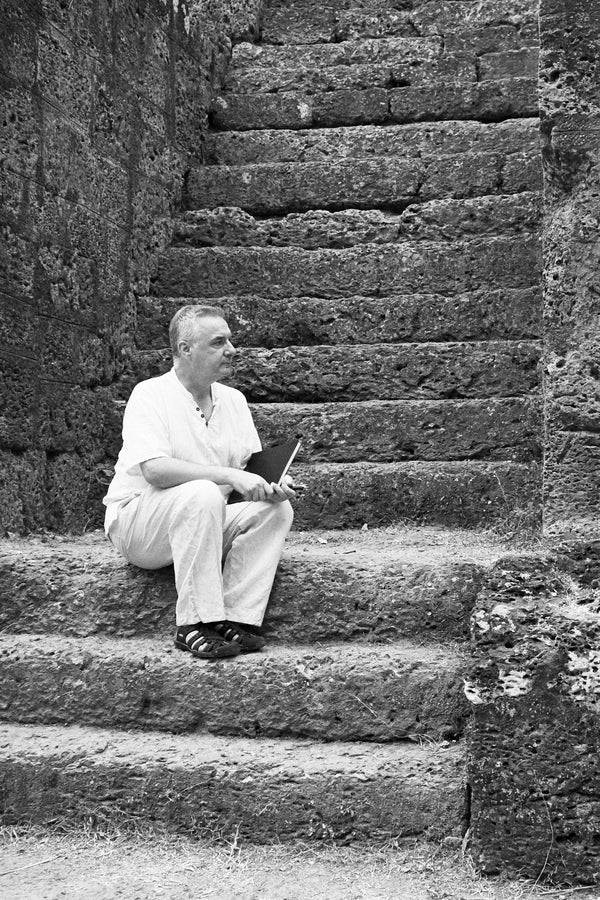
Join My Studio Journal
Receive occasional letters from my studio in Siem Reap—offering a glimpse into my creative process, early access to new fine art prints, field notes from the temples of Angkor, exhibition announcements, and reflections on beauty, impermanence, and the spirit of place.
No noise. No clutter. Just quiet inspiration, delivered gently.
Subscribe and stay connected to the unfolding story.
